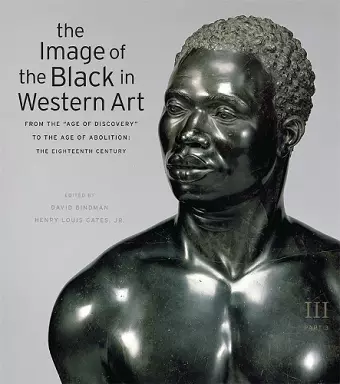The Image of the Black in Western Art, Volume III
From the "Age of Discovery" to the Age of Abolition, Part 3: The Eighteenth Century
David Bindman editor Henry Louis Gates, Jr editor Karen C C Dalton editor
Format:Hardback
Publisher:Harvard University Press
Published:14th Dec '11
Currently unavailable, and unfortunately no date known when it will be back

A fascinating story of the changing image of Africa's people in Western art. The images are simply extraordinary and the scholarship inspiring. Anyone who cares about Western art or about Africa and her diaspora ought to know these magnificent volumes. -- Kwame Anthony Appiah In addition to being an indispensable guide to the evolving meanings of racial difference, these dazzling volumes filled with extraordinary images and rich arguments contribute to an alternative history of the Western world. An invaluable gift for both specialists and general readers. -- Paul Gilroy, author of The Black Atlantic: Modernity and Double Consciousness
The Eighteenth Century features a rich collection of images of Africans representing slavery’s apogee and the beginnings of abolition. Old visual tropes of a master with adoring black slave gave way to depictions of Africans as victims and individuals, while at the same time the intellectual foundations of scientific racism were established.
In the 1960s, art patron Dominique de Menil founded an image archive showing the ways that people of African descent have been represented in Western art. Highlights from her collection appeared in three large-format volumes that quickly became collector’s items. A half-century later, Harvard University Press and the Du Bois Institute are proud to publish a complete set of ten sumptuous books, including new editions of the original volumes and two additional ones.
Europe and the World Beyond focuses geographically on peoples of South America and the Mediterranean as well as Africa—but conceptually it emphasizes the many ways that visual constructions of blacks mediated between Europe and a faraway African continent that was impinging ever more closely on daily life, especially in cities and ports engaged in slave trade.
The Eighteenth Century features a particularly rich collection of images of Africans representing slavery’s apogee and the beginnings of abolition. Old visual tropes of a master with adoring black slave gave way to depictions of Africans as victims and individuals, while at the same time the intellectual foundations of scientific racism were established.
A fascinating story of the changing image of Africa's people in Western art. The images are simply extraordinary and the scholarship inspiring. Anyone who cares about Western art or about Africa and her diaspora ought to know these magnificent volumes. -- Kwame Anthony Appiah
In addition to being an indispensable guide to the evolving meanings of racial difference, these dazzling volumes filled with extraordinary images and rich arguments contribute to an alternative history of the Western world. An invaluable gift for both specialists and general readers. -- Paul Gilroy, author of The Black Atlantic: Modernity and Double Consciousness
The latest in the series presenting Dominique and John de Menil's vast collection of images of Africans and the Diaspora, this volume examines the artwork of increasingly anti-slavery societies. As a byproduct of the Enlightenment, many people no longer considered skin color to be "anything more than a superficial sign of difference." As people of African descent became more integrated into society, they gradually came to be viewed as subjects rather than slaves. Ornate sculptures, elaborate dioramas, and myriad portraits show a greater appreciation of blacks as individuals as opposed to an idea or commodity. There are still plenty of depictions of blacks as pages, servants, and, in the case of Louis XIV's court, fashion accessories, but there are also remarkably progressive works such as William Hackwood's Wedgewood medallion, which shows a chained slave in prayer, circumscribed by the pressing question "Am I Not A Man and a Brother?," that illustrate slowly changing cultural perceptions of race...Like its predecessors, this is a vital and engaging work that deserves appreciation and study. * Publishers Weekly (starred weekly) *
ISBN: 9780674052635
Dimensions: unknown
Weight: 2155g
400 pages